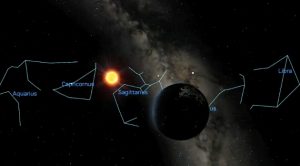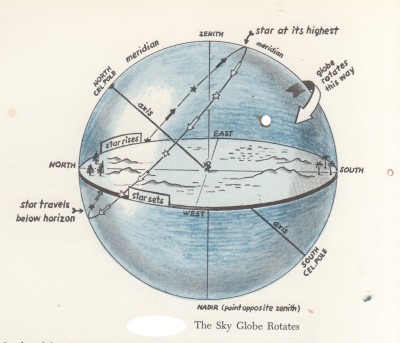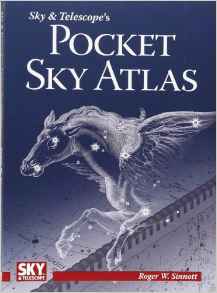Mississippi Valley Night Sky Conservation – FALL Astronomy Sessions
Program developed by:
- Mississippi Valley Conservation Authority in partnership with:
- Royal Astronomical Society of Canada
- Ottawa Astronomy Friends
- Night Sky Conservation Team members.
Resources we will be using:
- Terrence Dickinson, NightWatch, A Practical Guide to Viewing the Universe
- Sky and Telescope’s Pocket Sky Atlas
- RASC Observing Aids – StarFinder Planisphere and Moon Guide
Basic References available:
Jeremy Cook,The Hatfield Lunar Atlas
Guy Consolmagno, Dan M. Davis, Turn Left at Orion
Sue French, Celestial Sampler
RASC Observer’s Handbook -new material every year, and a benefit of membership
Library Books you can borrow…
- Menzel, Donald H. A field guide to the stars and planets; Houghton Mifflin Company, Boston: 1964. found at the Almonte Branch 523.8 Men
- Berman, Bob. The sun’s heartbeat; Little, Brown and Company, New York: c2001.found at the Almonte Branch 523.7 Ber
- Moore, Patrick. On the moon; Cassell & Co., London: c2001.found at the Almonte Branch 523.3 Moo
- Dickinson, Terence. NightWatch; Firefly Books, Richmond Hill: 2013, c2006.found at the Almonte Branch 523 Dic
- For a list of resources with more information: References
- Handouts:
- Constellations and Bright Stars CheckList (Explore the Universe):Explore the Universe Checklist – Constellations
- Lunar Observing: Observing The Moon PDF
- Deep Sky Observing:Autumn Deep Sky Collection
Donations can be made on-line to Mississippi Valley Conservation via canadaHelps Choose Night Sky Conservation fund
We will decide by consensus what is the best opportunity according to: the Fred Lossing Observatory Clear Sky Clock
-
-
- We look for dark blue transparency and relative humidity less than 90%. Typically In September, the warm air during the day can hold more moisture and then at nightfall, as the temperature drops, if relative humidity is high, dew will form on the telescopes and fog up the eyepieces .

- Sessions covering observations of the night sky will be posted at the MillstoneNews Science and Nature/NightSky News Millstone Night Sky News
- We look for dark blue transparency and relative humidity less than 90%. Typically In September, the warm air during the day can hold more moisture and then at nightfall, as the temperature drops, if relative humidity is high, dew will form on the telescopes and fog up the eyepieces .
Observing Sessions will focus on what we can see in a given week based on the lunar cycle
Road Map – Night Sky Overhead – Constellation Markers, Introducing the Milky Way
-
- Lunar Observations – First Quarter Moon
- Star Clusters – Stars within our galaxy galactic and Globular Clusters within the Milky Way
- Galaxies and Galaxy Clusters – Beyond our own Galaxy
- Reprise: – Our Galaxy we see in the Night Sky”The Milky Way”
-
HOW TO OBSERVE THE NIGHT SKY AROUND US
How to Plan and Understand your Astronomical Observations
- Education
- openstax – Open Education Astronomy Text – Download or read online
- Discover The Universe – On-line Canadian Astronomy: In partnership with the Royal Astronomical Society of Canada and the Federation des astronomes amateurs du Quebec. http://discovertheuniverse.ca/
- NightWatch -(available Almonte Public Library) Start with (skim) Chapters 1-4
- MillstoneNews Night Sky Articles – like … https://millstonenews.com/2015/04/locating-stars-in-the-night-sky.html
- Tools
- Observing Planisphere and Planetarium Software – Stellarium
- Moon charts and Virtual Moon Software – Explore the moon with Lunar Reconnaissance Orbiter Imagery
- Earth Centered Universe RASC SuperNova Scotia Software
- Program
- RASC Beginner’s Program: Explore the Universe exploretheuniverse
- Guides
- Observer’s Handbook – RASC
- Isabel Williamson Lunar Observing
- *YOUR* Logbook (Without a logbook you’ll always be a beginner)
Learning the Night Sky by Visual Observing
Observing Session Do’s and Don’ts
Do observing at the Mill of Kintail only when Night Sky Team members are on-site.
Tools and Equipment
- Do use sufficiently sturdy mounts for your telescope. (See NightWatch on the subject of suitable telescopes – avoid ‘Trash Telescopes’.)
- You can use binoculars, but we will be focusing on telescopic objects
- Do use our Star Charts, Observing Aids (includes electronic) and start taking notes in a logbook or on the observing list handouts
- Don’t use laser pointers
Astronomy observing etiquette
-
-
- Do help someone who is trying to find something if you know how to find it.
- Don’t use bright white lights – try to use red flashlights
- Don’t confuse the term astrology with the science of astronomy (“There is no ‘l’ in astro-no-my” ) . Astrology is a pseudo-science that claims to obey the rules of scientific reasoning and methods but does not. The scientific method that builds a model by repeatable experimental results does not work when applied to a theory proposing that the position of the sun and planets somehow affects human behaviour.
-
Observing Session Tips
-
-
- Don’t expect to see colour or a bright image in the eyepiece. You may be staring at it and not registering what you are seeing
- Prepare for a temperature drop during the night – bring extra sweater, water-proof foot-ware, possibly hat and gloves
- Prepare for the dew point to trigger high moisture and dewing on surfaces. As the temperature drops, relative humidity rises until water vapor condenses out of the air unto your exposed eyepieces and mirrors. We will try to keep a hair dryer available – having spare eyepieces will help.A familiar example of dew physics occurs when you take a bottle out of the refrigerator. If the bottle is colder than the air’s dew point, it drips with condensation. Our eyepieces are “the bottle”. They get fogged, and we are in an environment that is soggy and damp!
-
Night Sky Conservation:
The model for these Night Sky Sessions is to become acquainted with the Night Sky by “learning by doing”. This is a hands-on approach, and we encourage you to share your knowledge once you have mastered the basics of visual observing.
The incentive for conducting these sessions is to actively support our Dark Sky bylaw by teaching you to be ambassadors of the Night Sky in Mississippi Mills. By learning the sky and how to shield it from light pollution, you become a Night Sky Conservationist
Night Sky Bylaw created in partnership with Mississippi Valley Conservation and the Royal Astronomical Society of Canada;
-
-
-
-
-
-
- Dark skies in Mississippi Mills preserved by implementing our Night Sky Bylaw
- Bylaw implements program of Good Neighbour Dark Sky Lighting: Shield Outdoor Light fixtures to protect the ‘extinction’ of the Milky Way
- Night vision (scotopic) is different from day vision (photopic). Humans suffer from bright light glare finding it hard to adjust to the night sky – See Good Neighbour Lighting – How to Choose Healthy LED Lights
- Educate people about the night sky environment and encourage astronomical discovery such as cometary discovery. Amateurs collaborate with professionals!
-
-
-
-
-
The Fred Lossing Observatory :

A Long History of ‘Looking UP’ – sky at FLO

-
-
- Moved from North Mountain Ontario to Mississippi Mills to save it from growing light pollution.Thanks to the Preservation of our Dark Skies, the Fred Lossing Observatory is still actively maintained by the RASC Ottawa Center.
- Ottawa RASC members , ‘comet hunters’ spent many hours doing visual observations through the telescope. They discovered 5 comets, making FLO the only observatory in Canada with this distinction.
-



Night Sky Awareness Time of Year = Location of the Earth in its Orbit

Constellations Changing Positions. Due to the earth’s rotation, stars appear to move over the course of the night. As the Earth rotates from west to east, the stars appear to rise in the East, moving across south to set in the west. Due to the earth’s orbital motion around the Sun, the Sun will appear to move through the stars, making one complete circuit of the sky in 365 days. The Sun’s position along the zodiac constellations is exactly opposite to the constellation that crosses the meridian at midnight (assuming no daylight savings time) The constellations also change their positions; due to the advancing of the earth in its orbital motion around the Sun, the stars and constellations visible after sunset will rise earlier and set earlier by 4 minutes each night. Here is a link describing what happens to our sky as we travel in our yearly orbit: A Year on Earth.
Typical objects to view if the night sky is clear:
If the moon is 1 week after new moon, it appears bright in the sky with around 50% illumination. This is a good time to observe the moon -see the Night Sky article: Observing lunar horizons …
Our Nearest Neighbours – Solar System:
-
-
- Tonight, Jupiter (next to the crescent Moon), Mars and Saturn will be visible low in the evening sky.
- 5 other satellites of the Sun and the moon lie in the plane of the ecliptic.Only Mercury, Venus, Mars, Jupiter and Saturn are visible naked eye. The Planets and cometary objects in our Solar System are visible to us when their orbit takes them away from the glare of the sun into our night sky: Read more here Planets and their Path around the Sun In different years, we will see planets at different times. Their position is not fixed on our celestial sphere. They are wanderers, and may become morning or evening stars depending on their proximity to the Sun.
-
What to observe in the sky tonight?
Distant Suns – Stars and Constellations mapped on the Starfinder
Planisphere “Plan your Sphere!“
This will get you started on learning what the sky looks like for time of year and time of night. Note that if you wish to find something along the Northern horizon you need to flip the chart upside down.  Click on the image to see that the red arrow identifies the bright star rising in the NorthEast – That’s Capella in Auriga (Constellation Auriga is actually in the swath of sky oriented along the Winter Milky Way).
Click on the image to see that the red arrow identifies the bright star rising in the NorthEast – That’s Capella in Auriga (Constellation Auriga is actually in the swath of sky oriented along the Winter Milky Way).
Since we live in the Northern Hemisphere, we aim our telescopes to the southern Meridian line because stars, planets and galaxies ‘culminate’, that is, reach their highest elevation along our meridian (N-S) line looking South.

See: Locating stars in the Night Sky
From Solar System to the Stars and then to distant Galaxies
With just a 5″ reflector telescope we can explore stars, clusters of stars, interstellar gas and dust containing supernovae remnants and star nurseries. We can even explore galaxy systems outside of our own Milky Way galaxy.

We can observe systems of stars, star clusters that are found within constellation boundaries. (See Observing Star Clusters in and Around the Milky Way)
-
-
-
-
- We use constellations as a set of featured patterns that guide us to finding our star clusters in binoculars or telescopes. . Constellations are groupings of stars that are recognized as fixed star patterns on the celestial sphere. A set of 88 officially recognized constellations completely covers the sky.. The brightest stars help delineate their form.
- Late Summer and New Moon favor Deep Sky Observing Sessions. We uss Explore The Universe list with NightWatch to help us find the first catalogue of Celestial Objects: The Messier Catalog
- Objects such as a star cluster (thousands of light years away)
- Everything seen in the stars of a constellation, or star clusters is found within our own Milky Way galaxy (100,000 light years).
-
-
-
Here’s a roadmap for learning how to do Night Sky Observations Observing the Night Sky – How Tos…







